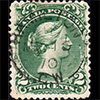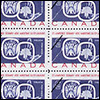Articles on canadian stamps
This section lists several articles on canadian stamps.

Postmasters General - 1896 to 1957
The Post Office was created as a federal department in 1867. Although postal operations in Canada date back to 1755, postal services were under the control of British authorities until 1851. In 1981, the Post Office ceased to be a government department and became a Crown corporation.
By Stampsandcanada | Wednesday, May 29, 2019

Most valuable and expensive canadian stamps
12 pence 1851, 2 cents 1868, 25 cents 1927, discover and learn about Canada's most expensive and rare stamps auctioned in recent years.
By Stampsandcanada | Wednesday, September 5, 2018

Stamp Production
The issue of a new stamp represents the final stage in a long process extending over two years. The public is invited to submit proposals to the Stamp Advisory Committee, which submits its recommendations on designs and choice of artists to the Canada Post Corporation.
By Library and Archive Canada | Saturday, May 15, 2010

Canadian stamps errors examples
Despite all the rigorous controls, errors sometimes creep into postage stamps, to the great delight of specialist philatelists. Errors are generally divided into two types: design and printing. Design errors encompass problems with text or design; printing errors, on the other hand, are faults with the colour, perforation, or omitted elements of the stamp.
By Library and Archive Canada | Saturday, May 15, 2010

Airmail in the Heroic Era - 1918-1939
The airplane was the workhorse of Canadian transport history beginning at the end of the First World War. The airplane helped Dominion surveyors map the seemingly endless expanse of land and water in the north; it enabled pulp and paper producers to better patrol their forest reserves, since thousands of acres of timber could be surveyed in a single flight; and it allowed mining companies to fly prospectors in to the most isolated places.
By Canadian Museum of History | Thursday, June 12, 1997
